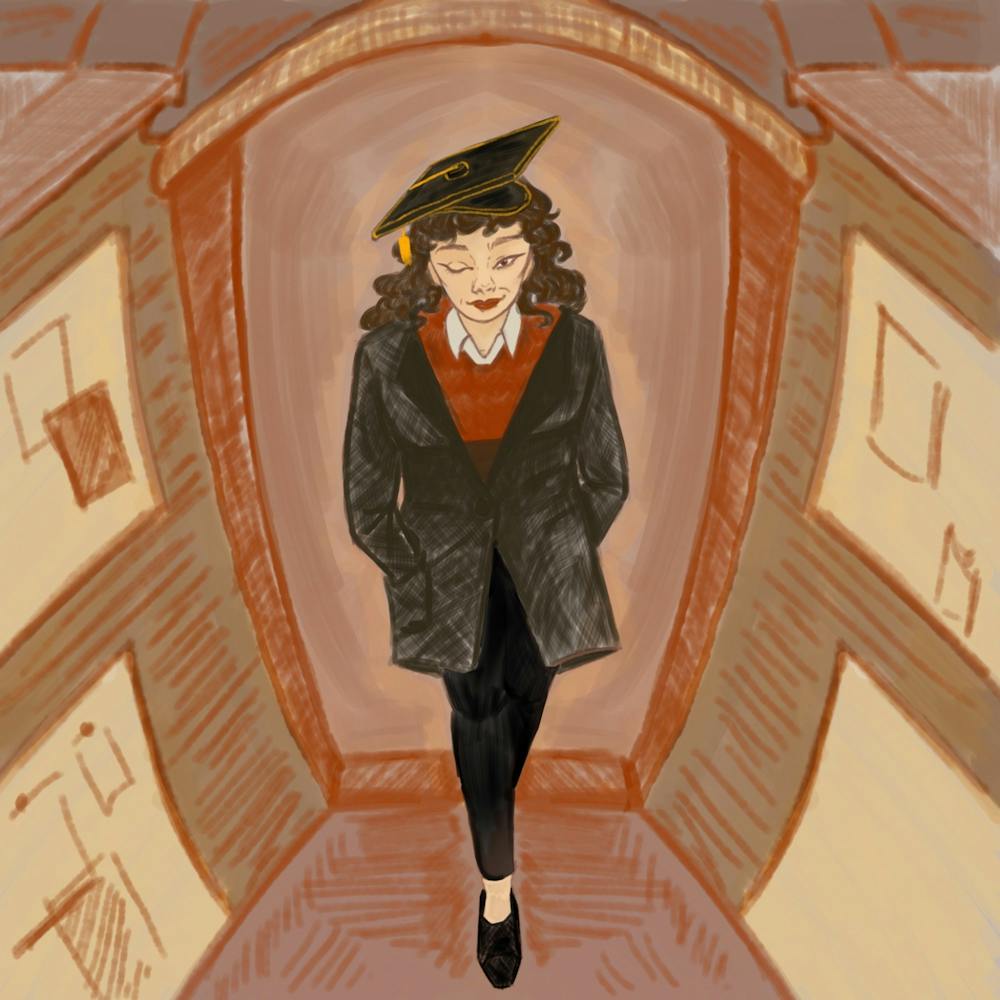Starring Sandra Oh of “Grey’s Anatomy” and “Killing Eve” fame, Netflix’s “The Chair,” is a witty and satirical campus drama consisting of six episodes that not only trace the challenges Oh’s character, Ji-Yoon Kim, faces as the new chair of a dwindling English department, but also highlights the importance of keeping humanistic areas of study alive.
Notably, Kim is the first woman of color to chair the English department at the fictitious Pembroke College. “The Chair” captures the struggles of being a woman of color in academia, emphasizing the personal obstacles such individuals face as they inhabit positions traditionally dominated by their white male counterparts.
The series begins with Kim settling into her new role as the chair of the English department at Pembroke. She quickly realizes that the department is a “ticking time bomb,” or rather that the department is dangerously near closing due to a lack of student interest. She immediately takes on this responsibility and asks her older and somewhat out-of-touch colleagues to mold their lesson plans to fit modern students’ interests and values, including and addressing topics like activism, equality, and social justice.
Her strategy to keep the English department both alive and desired at Pembroke is rooted in changing traditional practices. Some of the older professors at Pembroke pride themselves in ignoring students’ desire to study modern texts and instead stick with the same curriculum for years on end.
The resulting tension between older professors and younger, more “in-touch” professors is created partly due to Kim’s position as a young woman of color. Women of color are frequently stereotyped as non-leaders, given the assumption that, in many professional fields — like academia — a leader looks like a white man. For Kim, and many women of color, to step into the position of department chair also means inheriting the stereotypes and ideas about not belonging and inadequacy. Ultimately, for Kim, keeping the department alive means that she must break others’ preimposed beliefs and stereotypes about her capabilities. While the rifts between generations and race seem to be profound, Kim continues to fight for the arts and literature.
Moreover, it is important to note that at Pembroke, there are only two professors of color in the English department: Kim and Dr. Yasmin McKay (played by Nana Mensah), a Black scholar who is next-in-line for tenure. The cautiously optimistic way that these two female professors of color navigate the department is surely not foreign to minority groups in academia.
In one scene, McKay tries to work with an older white professor, Elliot Rentz (played by Bob Balaban), who is also involved in her tenure decision, to co-teach a class. While coordinating the class, Rentz repeatedly talks over McKay. In an attempt to connect with him, she discusses their shared interests such as Herman Melville, author of “Moby Dick.” Such attempts were not fruitful as students dozed off and did not express the same level of interest they would when McKay lectured. Shortly after this, she finds out that he is taking actions that could undermine her tenure.
Scenes like this depict the severe racial and gender-based tensions that are present not only in academia, but in most predominantly white fields. This scene demonstrated how, despite all of the hours of planning and extra work women of color invest, they often find their work undermined.

Furthermore, Kim, who is Asian American, works with her colleagues to reform the dysfunctional department and boost enrollment numbers. She admits to feeling out of place at times and asks herself: “Why’s some Asian lady teaching Emily Dickinson?” Comparable to many students and professors, she doubts her abilities and feels like she has something to prove to others.
Kim deals with a multitude of issues in addition to McKay’s tenure, including a viral scandal involving an English professor, rocky attempts at improving diversity and inclusion, and a senior professor’s farting problem. The show not only reveals the many challenges thrown Kim’s way, but functions as a subtle reminder of the effects of imposter syndrome, or feelings of self-doubt and personal incompetence, women of color often feel at predominantly white institutions.
“The Chair” conveys obvious truths about the world of academia and University politics. While it doesn’t completely villainize academia, it does shed light on the field’s complexities and (lack of) diversity. And, while the show does highlight the struggles that exist in academia, its goal is to reinforce that women of color should have these leadership positions. By giving the starring actress a traditional Korean name, for example, the show helps dispel the idea that English professors cannot be Asian.
Alongside the numerous issues that Kim manages at the university, she is also dealing with a slew of problems at home. She is attempting to care for her adopted daughter, Juju, who frequently asks Kim questions about her past. At the same time, Kim is taking care of her widowed father who does not speak English. While she hopes to carry on traditional parenting and caring practices, she struggles to prioritize both work and family. The show humanizes professors like Kim, illustrating the multitude of personal and professional responsibilities they may have. Kim essentially becomes a parent to both her own child and the English department, making the needs of others her priority. Thus, demonstrating that women of color are often expected to shoulder added amounts of responsibility and labor just to get by.

Although “The Chair” brilliantly captures the many difficulties female professors of color face in academia, I did feel as though some aspects of the show were exaggerated. As the show’s plot regarding inter-generational and interracial campus culture gradually unfolds, I couldn’t help but make comparisons to my personal experience as a college student taking humanities classes. At Princeton, I’ve been able to take courses in the English department centered on Asian American studies and works of literature by authors of minority groups. My professors in these classes have also been individuals of color and different cultural backgrounds. The show’s presentation of the English department as housing an overwhelmingly white faculty that primarily teaches older texts does not necessarily resonate with the modern equivalent of university life and academia.
That being said, the exaggeration does emphasize how departments in other areas of study and universities may closely resemble Pembroke’s English department and actually are in severe need of diversity. From an outsider’s perspective, elite academia may seem composed and put-together — full of students and professors who devote themselves to studying specific details of niche fields. However, “The Chair” illustrates the tense racial and gender issues that women of color may encounter in academia.
Aditi Desai is a senior writer for The Prospect and Newsletter sections and often covers healthcare issues. She can be reached at aditid@princeton.edu or @aditidesai0806 on Instagram.








